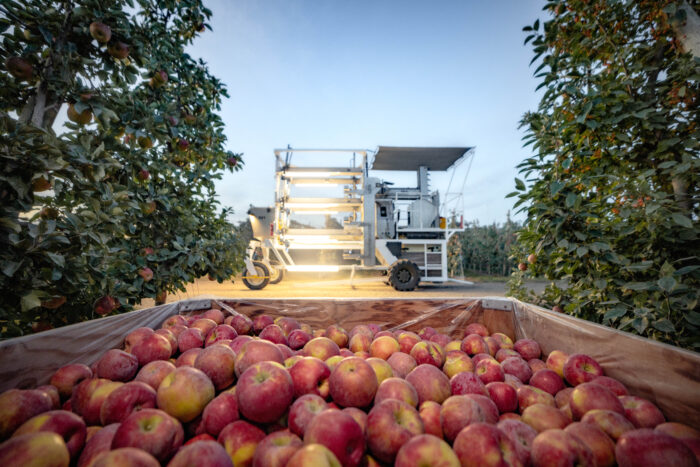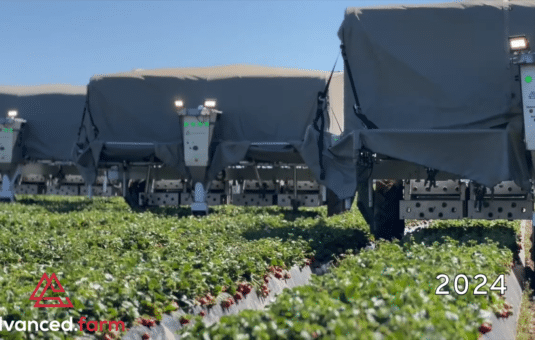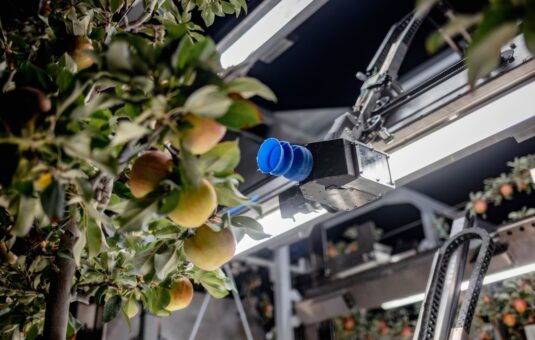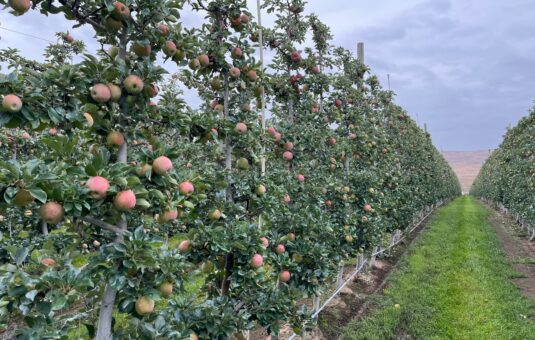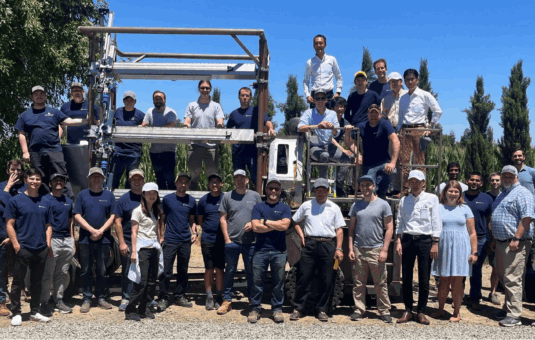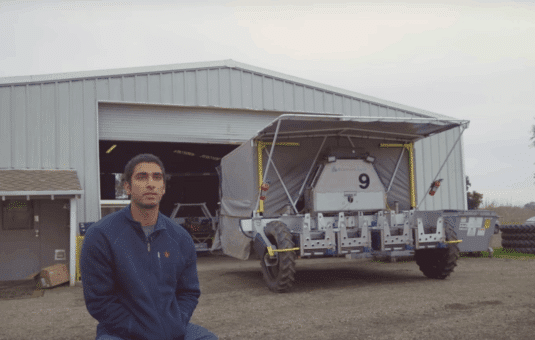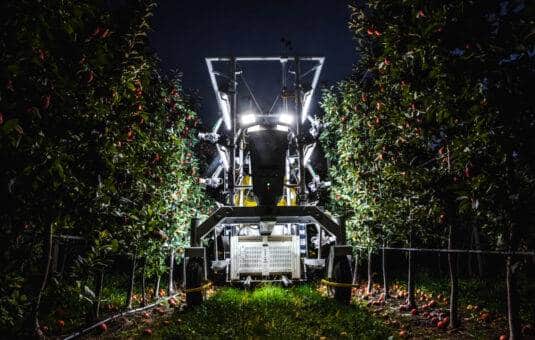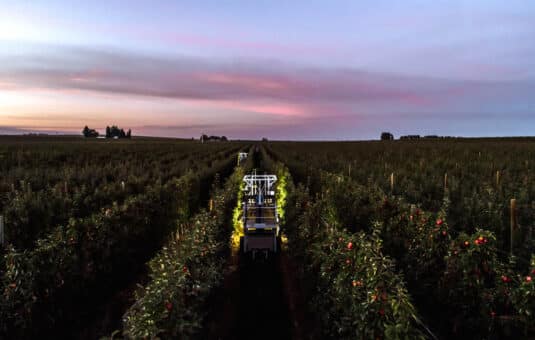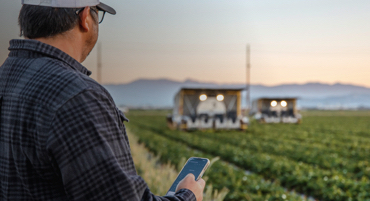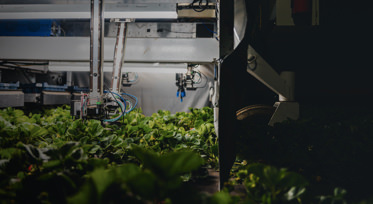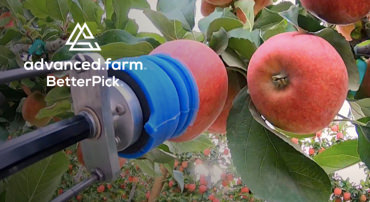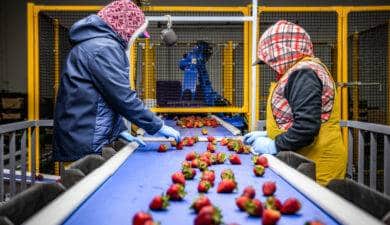Greetings From Washington!
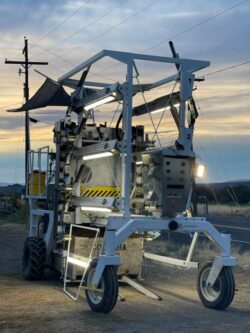
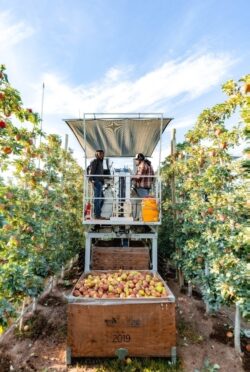

It’s been a thrilling first couple of months here in the heart of Apple country as we embark on another exciting season. Our team has put significant effort into building upon last year’s success, and we are eager to show the industry the strides we have made. We’d like to take a moment to extend our gratitude and appreciation to our incredible grower partners who have allowed us to pick on their farms thus far and those who plan to host us later in the season. The collaboration and support are instrumental in the success of this technology, and we’re deeply grateful for the trust these farmers have put in us with their fruit.
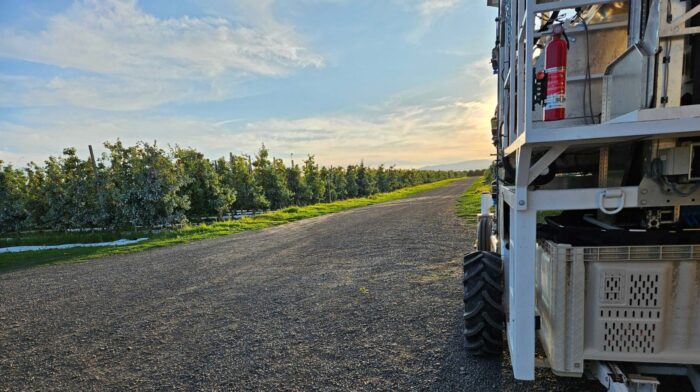
Building on the success of our last season, we’re eager to share the latest developments in our robotic harvest efforts. In this newsletter edition, you’ll find a short Q&A with a few team members and what advancements they are most excited about. But it’s not just about our journey– it’s about collaboration and synergy. As you read on, you’ll also discover what our team members believe in how growers can better meet robotic harvest halfway.
________________________________________________________________________________________
Q&A with the Team
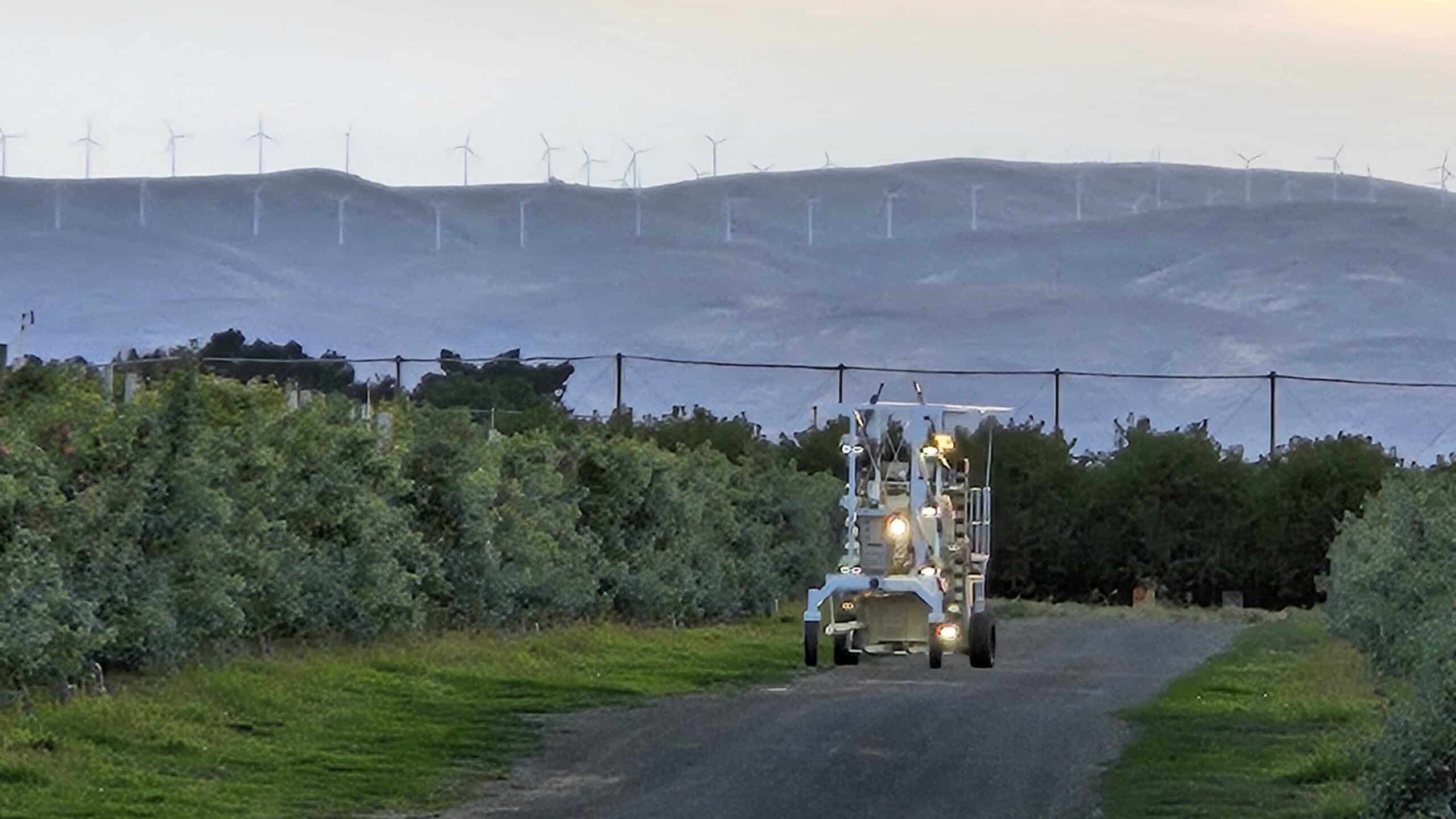
Name: Matt Golman
Title: Mechanical Engineer
- In what ways has the feedback and experience gained from last year’s apple season influenced the development and fine-tuning of our tech for the upcoming season?
Last year’s season was a bit of a shot-in-the-dark for us. We took our best stab at it, knowing that we were going to both make some mistakes in the process and learn from those mistakes. The biggest lessons learned were how much row width and pruning affect our picking success, how important (and challenging) it is to control apple damage, and what a wealth of knowledge there is to learn from the people who live and work in the field. - How has our robotic harvester evolved since last season, and what improvements have been made?
To address the row width and pruning, we pulled out 6″ out of the width where the grippers do their scanning and picking. We redesigned the gripper and arm to shrink the assembly and shield all of the tubes and wires that were sticking out last season in order to keep them from snagging on the foliage. While doing all that, we also IP-rated most of our subsystems so that we can operate in wet conditions. To address some of the apple damage, we completely redesigned the conveyance system to keep apples moving in a slow and controlled manner while they move past our stem trimming platform and into the bin filler. The University of Washington and the University of California, Davis published some great papers that let us set guidelines for speed and acceleration to keep damage to a minimum. We also added cupholders and a sunshade! If you’re going to make a robot do your work for you, you might as well make yourself comfortable. - What steps can growers take to facilitate successful collaboration with robotic harvest technology?
We’re bringing a lot of knowledge into this field from our robotics and strawberry harvest experience, but there are lifetimes of apple industry knowledge that we don’t have yet. If we’re on your orchard and doing something that doesn’t make sense, please let us know. It’s possible that we’re doing something very clever, but it’s more likely that we just have more to learn. Every change we’ve made to the system from our initial prototype in May of 2022 to today was made because of a critique somewhere along the line. We’ve never improved from a compliment. So, please bear with us as we work through the struggles of robotic harvest, always share your feedback freely, and keep those rows trimmed tightly.
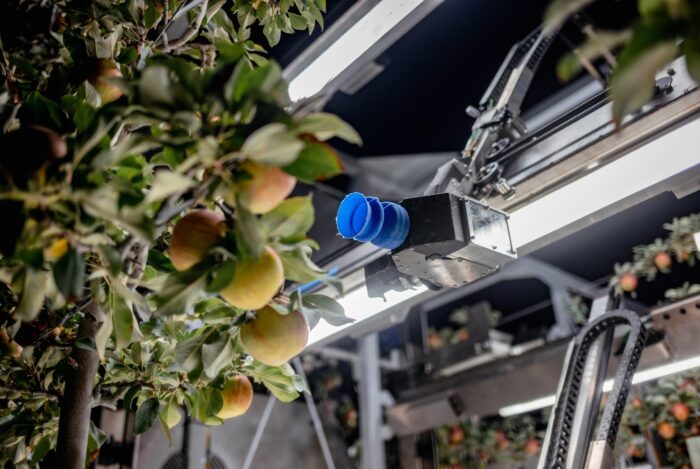
Name: Erik Cumins
Title: Director of Software
- In what ways has the feedback and experience gained from last year’s apple season influenced the development and fine-tuning of our tech for the upcoming season?
Last season, our gripper and arm were prone to snagging on branches and wires due to exposed mechanical features. This year, we have launched a redesigned arm and gripper that better manages cables and incorporates smooth coverings to prevent both hardware damage and harm to the trees. Previously, apples were damaged as they were released into the conveyance system via drop ramps. We have since replaced these ramps with driven horizontal conveyors, minimizing the speed at which apples collide thereby reducing damage. Furthermore, we’ve doubled the picking speed compared to last season, thanks to substantial upgrades to the control code running on the harvester. - How has our robotic harvester evolved since last season, and what improvements have been made?
Last year, we discovered that the degree to which an apple is covered by leaves or branches—known as occlusion—is a key factor affecting our ability to pick it successfully. While we initially recognized the importance of measuring occlusion, we didn’t fully appreciate how critical it would be. This season, we’re exploring new ways to categorize various characteristics of each apple in order to optimize our picking techniques, especially for apples that are harder to access. In contrast to our strawberry-harvesting robots, which are shielded from weather, our apple-harvesting robots are exposed to the elements. We discovered through experience that they lacked sufficient weatherproofing, necessitating makeshift covers during precipitation. This season, we have introduced weather-resistant robots that have already withstood multiple instances of rain and other weather conditions. Additionally, manual steering of the harvester proved to be more challenging than we initially expected last season, leading to suboptimal picking sessions. In response, we have enhanced our drive system for better control and are now employing lidar technology for autonomous steering, eliminating the need for human intervention. - What steps can growers take to facilitate successful collaboration with robotic harvest technology?
There are two main criteria that are crucial for maximizing the harvester’s performance on a farm:
Pruning large, protruding branches: These often occur on the lower parts of the tree and are particularly thick. Depending on the row width (9ft, 10ft, 11ft), if these branches extend beyond the tree’s general outline, they can interfere with the robots as they scan for new fruit to pick.
Removing leaves covering apples: The presence of leaves makes it more challenging to pick apples effectively. Any effort to clear the view of the apple will significantly enhance the harvester’s performance. Although we are continually developing better ways to pick apples that are obscured by leaves, tackling the problem from both ends—robotic and manual—is essential for optimal results.
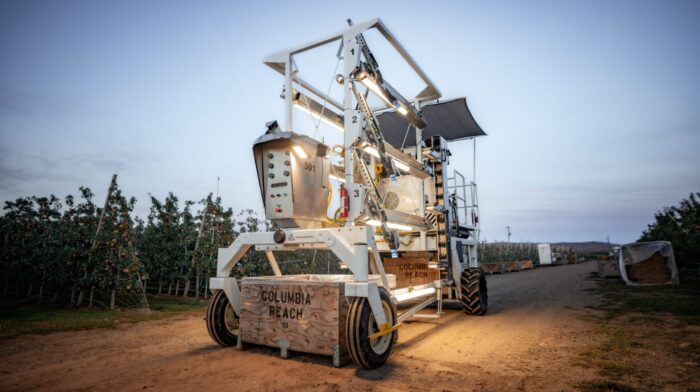
Name: Peter Ferguson
Title: Director of Business Development
- In what ways has the feedback and experience gained from last year’s apple season influenced the development and fine-tuning of our tech for the upcoming season?
Last year, we learned a lot about what kind of orchards work best for robotic harvest and what the roadmap looks like that we will need to follow in order to get to a finished product.
- How has our robotic harvester evolved since last season, and what improvements have been made?
We acknowledge that we are trying to do something that has never been done before, and with that difficulty, we recognize that it will take some time to build a finished product. That being said, we have already seen massive improvements this year compared to last year. Our picking speed has risen dramatically, and we are seeing peak speeds of almost 2,500 apples picked per hour. This is two times faster than last year. However, we always say, “It doesn’t matter how fast we pick if we significantly damage the apples in the process.” Fortunately, we made a lot of improvements to the mechanical systems so that the apples retain a higher quality this year.
- What steps can growers take to facilitate a successful collaboration with robotic harvest technology?
In our work with growers, we collaborate on pruning and training the trees in a way that will be ideal for robotic harvest. We also collaborate on data collection so that we can have clear metrics of things like apple damage that will guide our future work.
- How can growers actively participate in providing feedback and collaborating with our team to improve the technology?
Our partnerships with farmers in the industry heavily influence our development. While we pride ourselves in being skilled technologists, we do not have a wealth of farming knowledge that folks in Central Washington have gained from many generations of experience.
